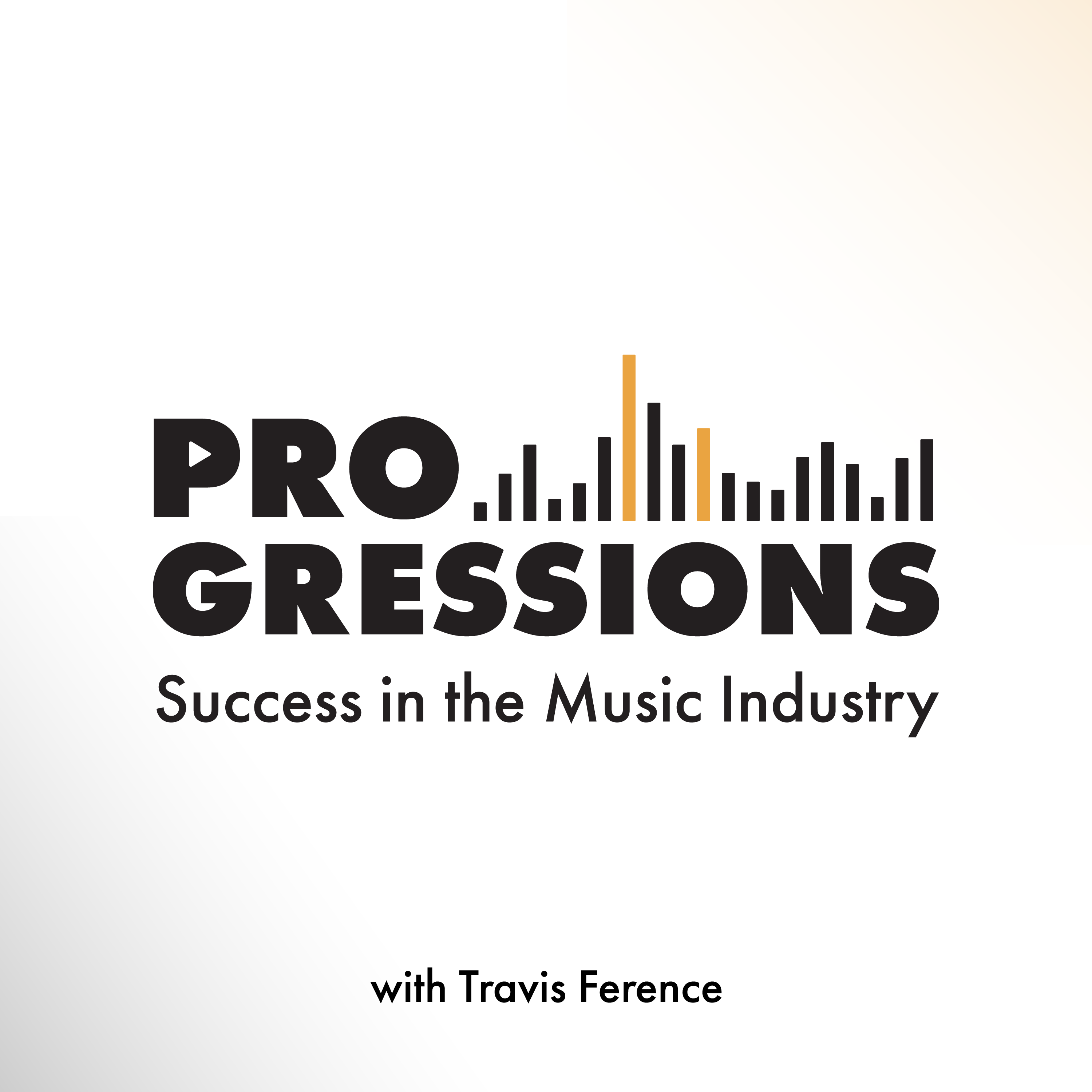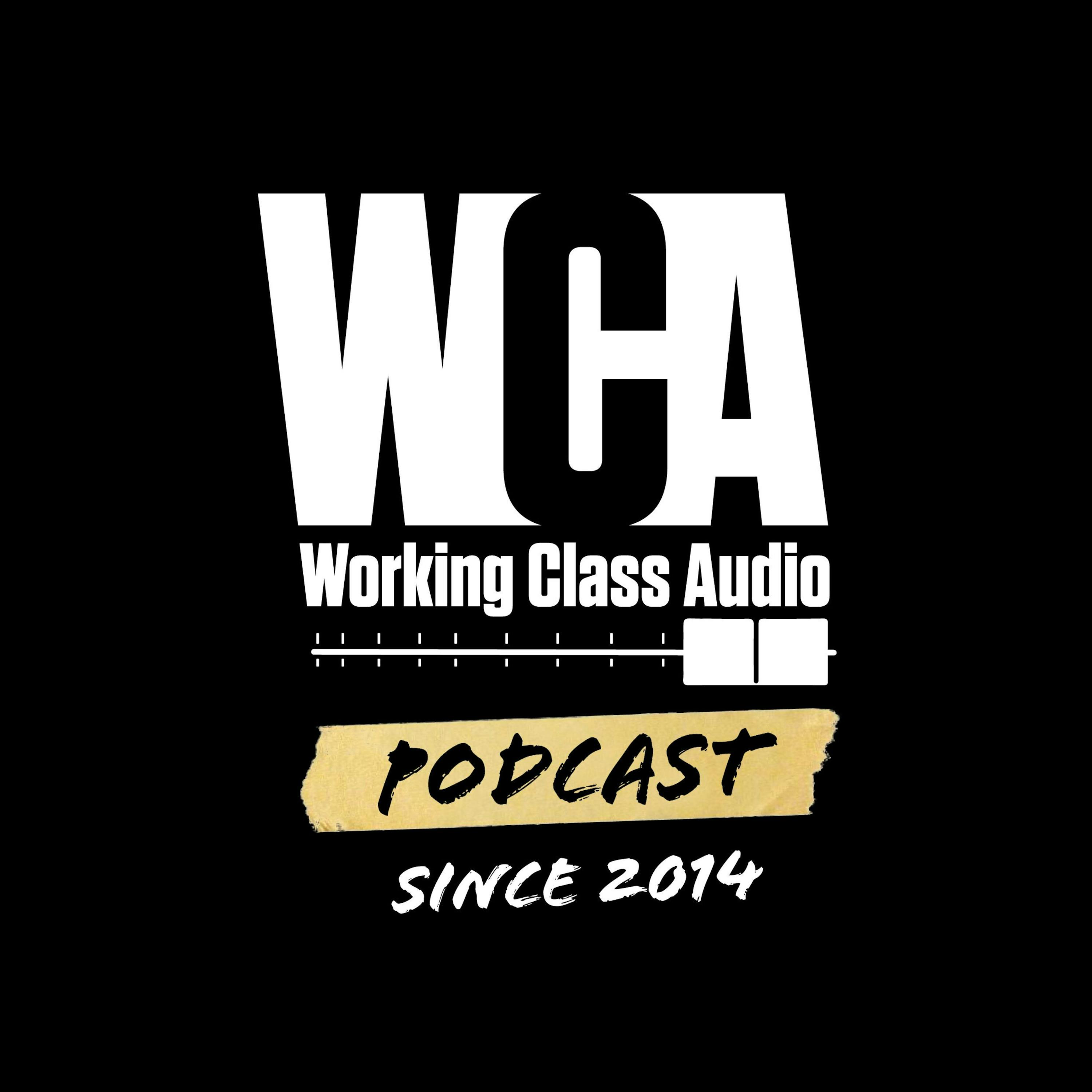
Music Production Podcast for DIY Music Producers and Artists | Inside The Mix
If you're searching for answers on topics such as: what is mixing in music, how I can learn to mix music, how to start music production, how can I get better at music production, what is music production, or maybe how to get into the music industry or even just how to release music. Either way, you’re my kind of person and there's something in this podcast for you!
I'm Marc Matthews and I host the Inside The Mix Podcast. It's the ultimate serial podcast for music production and mixing enthusiasts. Say goodbye to generic interviews and tutorials, because I'm taking things to the next level. Join me as I feature listeners in round table music critiques and offer exclusive one-to-one coaching sessions to kickstart your music production and mixing journey. Get ready for cutting-edge music production tutorials and insightful interviews with Grammy Award-winning audio professionals like Dom Morley (Adele) and Mike Exeter (Black Sabbath). If you're passionate about music production and mixing like me, Inside The Mix is the podcast you can't afford to miss!
Start with this audience-favourite episode: #175: What's the Secret to Mixing Without Muddiness? Achieving Clarity and Dynamics in a Mix
Thanks for listening!
Music Production Podcast for DIY Music Producers and Artists | Inside The Mix
#99: Exploring the Secrets of Loudness Units Full Scale (LUFS) in Music Mixing and Mastering
If you are looking for audio mastering and mixing tips on topics like what is a good LUFS level, what is the meaning of loudness, and how can I make my mix louder? Then check out EP 99 of the Inside The Mix podcast.
Unleash your understanding of sound science as we unlock the secrets of Loudness Units Full Scale or LUFS in this compelling episode. Imagine yourself conquering the art of mixing and mastering with a clear grasp of LUFS and how it influences the perception of loudness. Our host, Marc Matthews, a wizard in the realm of music engineering, takes you on a journey into the world of frequencies, explaining how low-end energy contributes to a louder master. We're not just talking about it; we're showing it! Get ready for a live demo of a track, giving you a real-time reflection of LUFS values.
What if you could master your sensitivity and perception of loudness across different frequencies? Today, we'll unravel the answers to this question as we delve into the mysteries of metering and LUFS values within a mix. Marc emphasizes that the golden rule is simple: if it sounds good, it is good. Get a sneak peek at his favorite metering tool and his top recommendations for mastering plugins as he guides you on this fascinating exploration of audio perception. Whether you're a budding music engineer or an established audio magician, this episode will amplify your understanding of sound. Tune in and turn up the volume on your music production skills!
✸✸✸✸✸✸✸✸✸✸✸✸✸✸✸✸✸✸✸✸✸✸✸✸✸✸
Download the 5 Essential Free Mastering Plugins guide and immediately take your music mastering to lofty new heights. Download for free at: https://www.synthmusicmastering.com/free
Book your FREE 20 Minute Discovery Call
Follow Marc Matthews' Socials:
Instagram | YouTube | Synth Music Mastering
Thanks for listening!!
Hey Inside the Mix podcast fans, it's Midsummer X aka Johan Collendale. You can find my new song Hollywood Star on all streaming services or watch the video on YouTube. You can purchase the song on iTunes or Bandcamp. You are listening to the Inside the Mix podcast. Here's your host, Mark Matthews.
Speaker 2:Hello and welcome to the Inside the Mix podcast. I'm Mark Matthews, your host, musician, producer and mix and mastering engineer. You've come to the right place if you want to know more about your favorite synth music artists, music engineering and production, songwriting and the music industry. I've been writing, producing, mixing and mastering music for over 15 years and I want to share what I've learned with you. Hello, folks, and welcome back to the Inside the Mix podcast. If you are a new listener, please do hit that subscribe button on your podcast Player of Choice and don't forget to hit subscribe and the notification bell if you're watching on YouTube so you can get notified of any new episodes. If you're a returning listener, a big welcome back.
Speaker 2:In this episode we're going to be delving into loudness and, in particular, luffs or LKFS. What does Luffs stand for? Loudness units, full scale. This is not going to be a technical deep dive. It's sort of like a high level overview. But by the end of this episode you'll have a better understanding of what Luffs are and perceived loudness and how you could then use this in your mixing and mastering. But before we dive into this week's episode, I just want to make you aware of a freebie we've got over at synthmusicmasteringcom and it's my five essential free mastering plugins. So to get this freebie, all you need to do is go to wwwsynthmusicmasteringcom, forward slash podcast and you can download that freebie and check out my five essential free mastering plugins. So let's dive into this week's episode.
Speaker 2:Okay, folks, so we are focusing on loudness and how we perceive loudness. Now, loudness is an average okay, it's not just an instantaneous peak, so it's an average and we perceive loudness differently, rather across the frequency spectrum. For example, a one kilohertz sine wave is going to be perceived to be louder than a 50 hertz sine wave, even though they're the same DBFS value. Now, other measurements, like true peak and other metrics need to be considered, but in this episode we're focusing on Luffs loudness units full scale. Okay, so we're looking at Luffs loudness units full scale and they represent what we actually hear because, remember, we are not equally sensitive across the frequency spectrum. Okay, we're not going to perceive frequencies at the same level across the frequency spectrum, and that's where loudness units full scale come in. Well, they do in this instance for this tutorial.
Speaker 2:So here I've got an example. I've got this test tone, okay, and it's a sine wave, and I'm going to set it to 50 hertz and there we go 50 hertz and it's set at minus 20 DBFS on my channel and I've got my loudness meter here, which is just a standard one in logic. I like to use insight by using this one in logic here and I've got momentary, short-term and integrated. Momentary is an average across 300 milliseconds. Short term is an average across three seconds and integrated is across the whole program or the whole piece or the entire performance music, the song and I'm gonna play this now and remember this is at minus 20. So this is a 50 hertz sine wave at minus 20 dBFS and I can see on the meter it's reading momentary and short term, minus 36.6, which is what I would expect. I'm now gonna boost it to one kilohertz or a thousand hertz and immediately you can hear it sounds louder and it's registering as minus 32. Momentary and short term LUFS. I'm just gonna turn it off because it's quite jarring, but you can hear how our ears perceive frequencies differently across the frequency spectrum.
Speaker 2:So what does this mean for your mix and master? Essentially, imagine you're in a situation whereby you've got a reference track and you're comparing your master to the reference and you can see there's approximately the same LUFS. So the short term is about the same, the integrated is about the same, but yours just doesn't sound as loud. Okay, the old perception is that it's not as loud, and one of the reasons could be that you've got a lot of low energy build up there, and my first point of call would be to go back to the mix, find out what it is that is taking up all that energy and then addressing it, so that way you can then go back to the master and then you could just boost it that little bit more, because you've given yourself a bit more headroom, okay, by tackling that low energy. So, just to sort of summarize what I've said, there is your mix, or your master, rather doesn't sound as loud as your reference. It's probably something to do with the low end and that low end energy, but I'm not saying that's gonna be the silver bullet. There might be other things, but that's one of the places I would look. So let's give this a bit more context in terms of a mix.
Speaker 2:So I've got Insight 2 open here by Isotope, and this is my favorite metering tool, but Ulean is a free one and that's a fantastic one as well. So do go check that one out. It's actually one of the five plugins in my free giveaway I mentioned at the beginning of the episode. So I've got my momentary 300 milliseconds, I've got my integrated the average across the piece and I've got my short term, which is three seconds, and I'm gonna play this and let's see where these values sit. It means I haven't got any wild variations going on in there in this piece, which is exactly what I want. And then my true peaks at minus 10 and I've got an RMS which I think sat around 20. So I've got a crest factor of about 10, which is great, which is what I want, because ultimately this is a sweeping statement, but a mix with a high crest factor isn't going to sound as loud as a mix with a lower crest factor. So that works perfectly for me. But I don't want to push it too far because I'm not moving into the realm of EDM. So that's just a bit of context there. So that's sat around minus 20 to minus 23 luffs for this mix that I'll then take forward into mastering.
Speaker 2:So the next big question is you've moved on from your mix and it's this how loud should the master be? Now there isn't really a set answer or response for this. But you kind of want to make it sound as loud as possible but manage the trade-offs. It's got to be conducive for the music, so as loud as it can be and as good as it can be, and whatever that may sound like. One thing you don't want to do is master to a target value. So don't just slap a metering tool on there, set it to minus 14 luffs because that's what Spotify has told you to do and then master to that target.
Speaker 2:The advice I would give is just to master it so it sounds as good as it can be at that level. Okay, so push it. Look, do it to a reference, pick a song in a similar genre to the one you have and look at where that one's at and maybe use that as a reference so it's sounding the perceived loudness to be the same and then look at that integrated luffs value. When it comes to actual streaming platforms, you'll read a lot online with regards to the level it should be sat at. For example, spotify say minus 14 luffs, minus 2, true, peak.
Speaker 2:But personally I think you should just master it and make it sound good. I mean, if I really had to put a figure on it, I would say an integrated level of roughly like minus 11 to minus nine luffs, with a max short term level sort of no more than minus 10 to minus nine, somewhere around that, and you probably find that it's likely to get turned down by streaming platforms, but not that much. So if you're really unsure, that's a pretty good place to start. But once again, it's probably a sweeping statement, but that's a good place to start. But ultimately I think don't mix master to a target and if it sounds good and it feels good, then roll with that. It's going to play back well on most platforms.
Speaker 2:And remember, everybody has access to a volume knob. You can turn music up and down and, in particular, turn off normalization in Spotify and then put on a playlist of your favorite music and just see what the different levels are. But remember we have a volume knob and we can turn music up and we can turn it down. So just a quick summary.
Speaker 2:We've looked at luffs today, loudness perception, how we perceive loudness, and remember we don't experience, we don't perceive loudness the same across the frequency spectrum.
Speaker 2:We're not as sensitive across the frequency spectrum and we did that test with the 50 hertz versus the one killer hertz at the same DBFS level, but the one killer hertz was perceived to be louder. And then we looked at metering and we looked at short term, okay, which is three seconds momentary, 300 milliseconds and integrated luffs values, and then we use those in terms of a mix and what we'd expect to see. We saw a mix that was between minus 20 to minus 23 luffs integrated and somewhere in between on the short term and momentary. And then I also gave you a bit of background, a bit of knowledge in terms of mastering and luffs values. Now, I didn't give you a definitive answer and it was a bit of a woolly answer, but effectively I think it's a good answer in terms of if it sounds good, it is good and roll with that. So, folks, before you go, make sure you head over to synthmusikmasteringcom, forward slash podcast and download my guide to the five essential free mastering plugins.









